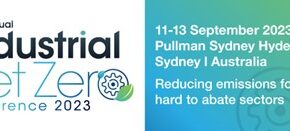Bridging the gaps between developers and buyers of renewable energy
The BRC-A sessions during Day 2 of the Clean Energy Council’s Australian Clean Energy Summit saw more insights emerge from a diverse range of experienced industry professionals. Open conversations with the audience, panel discussions and recent corporate Power Purchase Agreement (cPPA) case studies revolved around several core principles:
1. The market demands depth of understanding
Dan Brown’s (Ashurst) cautioned renewable energy project developers against using the same slide deck for different corporate customers, and said ‘exercising the usual muscle’ of communicating only electricity volume, price, project location and marginal loss factor (MLF) in a submission is simply insufficient. Instead, researching and assessing the sustainability goals and core commercial values of each prospective client to develop an intuitive understanding of what they seek works wonders in the engagement journey (a journey that ought to be ‘honoured’!).
Buyer experience regarding developer-side understanding contributed by Peter Dobney (Orora) and Hugh Butcher (Eastern Alliance for Greenhouse Action) highlighted the necessity of risk appetite being explored adequately on a per client basis. Lachlan Creswell (Macquarie Capital) reiterated this need to tailor the offering to every customer, especially in developing an understanding of what deal arrangement is most appropriate. He said this hinges on the fact that successful outcomes require commitment of time and support from senior stakeholders given cPPAs involve long timeframes, significant financial value and strategic implications as opposed to simpler, reversible procurement decisions.
2. Partnership patience is a prerequisite
The prevailing sentiments of Stephen Sasse (Nectar Farms) and Hugh echoed those of Day 1’s discussion over breakfast; addressing knowledge gaps between parties early and consistently is instrumental to deal success.
Stephen foreshadowed that corporates facing lengthy, inefficient PPA negotiations means they might have to become renewables experts themselves, a signal which could deter offshore capital procurement. ‘The renewables industry needs to be thinking much more about [companies] like Nectar’ in addition to giants like Woolworths; ‘that’s where new growth and investment is coming from’.
Dan advised developers to be cognisant of the possibility of the time-intensive nature of these deals arousing frustration within the deal team that might be itching to move onto the next procurement project, emphasising that ‘a high level of emotional intelligence’ ought to be administered throughout. ‘If the corporate isn’t sophisticated, if it doesn’t have a great advisory team, if they aren’t a member of the BRC-A, what can they do?’
3. Transparency and clarity are paramount
Peter Dobney (Orora), Lachlan, Dan and Hugh were in unanimous agreement thattransparency between parties minimises pain points and drives efficient, mutually beneficial deals.
Lachlan says gaining ‘clarity around what customers are looking for’ and in turn ‘delivering clarity’ as a developer is necessary for identifying core objectives of the undertaking. A key aspect of this exchange is facilitating buyer awareness around potential project limitations: risk allocation, for example, may look very different for an individual developer versus a retail contract backed by a diversified portfolio of generation.
Dan revealed that corporate buyers can also find themselves frustrated by an ‘incremental degradation of commercial, legal and technical aspects of the proposal originally submitted by the bidder’ which in the past has resulted in developers losing out; his antidote is to be explicit and upfront, setting clear expectations rather than evoking suspicion through value erosion. Stacey Vacher (Edge Energy Services) mirrored this point, saying developer dissatisfaction can arise from a lack of visibility on the client’s internal approval processes, but echoed Dan’s advice on the necessity of open communication.
Being mindful not to overlook the inclusion of pertinent information in applications is also important to Dan: in such a scenario a corporate’s ‘natural imperative will be to disregard rather than wait around and waste time’. Instead, ‘observing the rules of engagement’ and attention to detail helps ‘build trust and rapport’. According to Hugh, submitting complete applications that appear to ‘understand customers beyond the technical and financial parameters’ facilitates mutual appreciation.
4. Corporate ambition is driving retail product innovation
Chris Halliwell (Renewable Energy Hub) notes that the cPPA transition has arisen from customer-led disruption, signifying corporates are displaying preparedness to take on risk to capture economic opportunities. Understandably, he admits, it has taken some time for retail options to match rapid market development, but customers have become increasingly empowered to pick and choose attractive options and proactively manage their risk exposure. Daniel Teng (Origin Energy) says Origin has been paying particular attention to the evolving cPPA market and responds according to what new products are being required by their customer base.
Challenges do remain, but new value emerges once they are better understood: Jonathan Filbey (Octopus Investments) revealed emerging transaction structures are beginning to explore how outstanding risks like MLF assumptions and grid connection timeframes can be shared between equity owners and developers.
Stacey has optimism for the retailer market, also pointing to new deal structures allowing additional risk management through competitive firming. ‘Customers are demanding choice and driving product development’.
Final remarks from the BRC-A
The Business Renewables Centre Australia would like to sincerely thank all of its guest presenters involved in the sessions on both days for their professionalism and insights, and extend gratitude to the Clean Energy Council for their invitation and ongoing collaboration.
On the BRC-A’s growing Resource Library, Dr Chris Briggs encourages our members to check out both the Deal Structure Primer, to help dispel the ‘paralysing level of complexity that 235 possible PPA deal structures in Australia’ can evoke, and what may be the first free, publicly available Term Sheet Template in Australia for use by buyers as a starting point on their PPA procurement journey. Stay tuned for Accounting and Economic Analysis Primers!
Latest news & blogs
NEWS | 7 November, 2023





